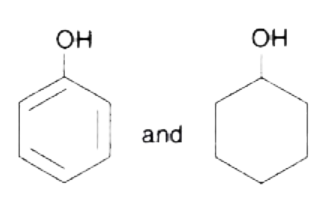Give a chemical test to distinguish between the following gases
and
To distinguish between carbon dioxide (CO₂) and sulfur dioxide (SO₂), we can perform specific chemical tests for each gas. Here’s a step-by-step solution:
Step 1: Prepare the Test Environment
- Gather the necessary materials: limewater (a saturated solution of calcium hydroxide), potassium dichromate (K₂Cr₂O₇), and a test tube or gas jar for each gas.
Step 2: Test for Carbon Dioxide (CO₂)
1. Introduce CO₂ into Limewater: Take a small amount of limewater in a test tube.
2. Bubble CO₂ through Limewater: Pass the CO₂ gas through the limewater.
3. Observe the Reaction: If CO₂ is present, the limewater will turn milky due to the formation of calcium carbonate (CaCO₃).
4. Excess CO₂: Continue to pass CO₂ through the limewater. The milkiness will disappear, indicating that excess CO₂ reacts with calcium carbonate to form soluble calcium bicarbonate.
Step 3: Test for Sulfur Dioxide (SO₂)
1. Introduce SO₂ into Potassium Dichromate Solution: Take a small amount of an orange potassium dichromate solution in another test tube.
2. Bubble SO₂ through the Solution: Pass the SO₂ gas through the potassium dichromate solution.
3. Observe the Reaction: If SO₂ is present, the orange color of the potassium dichromate will change to green due to the reduction of Cr₂O₇²⁻ ions to Cr³⁺ ions.
Conclusion
- If the limewater turns milky and then clears with excess CO₂, you have identified CO₂.
- If the orange potassium dichromate solution turns green, you have identified SO₂.
- Gather the necessary materials: limewater (a saturated solution of calcium hydroxide), potassium dichromate (K₂Cr₂O₇), and a test tube or gas jar for each gas.
1. Introduce CO₂ into Limewater: Take a small amount of limewater in a test tube.
2. Bubble CO₂ through Limewater: Pass the CO₂ gas through the limewater.
3. Observe the Reaction: If CO₂ is present, the limewater will turn milky due to the formation of calcium carbonate (CaCO₃).
4. Excess CO₂: Continue to pass CO₂ through the limewater. The milkiness will disappear, indicating that excess CO₂ reacts with calcium carbonate to form soluble calcium bicarbonate.
1. Introduce SO₂ into Potassium Dichromate Solution: Take a small amount of an orange potassium dichromate solution in another test tube.
2. Bubble SO₂ through the Solution: Pass the SO₂ gas through the potassium dichromate solution.
3. Observe the Reaction: If SO₂ is present, the orange color of the potassium dichromate will change to green due to the reduction of Cr₂O₇²⁻ ions to Cr³⁺ ions.
- If the limewater turns milky and then clears with excess CO₂, you have identified CO₂.
- If the orange potassium dichromate solution turns green, you have identified SO₂.
Topper's Solved these Questions
- PRACTICAL WORKBOOK - ICSECHAPTER - PRACTICAL WORKEXERCISE - EXCERCISE 9 (B)
17 Videos
- PRACTICAL WORKBOOK - ICSECHAPTER - PRACTICAL WORKEXERCISE - EXCERCISE 9 (C)
19 Videos
- ICSE EXAMINATION PAPER 2020 BOOK - ICSECHAPTER - ICSE EXAMINATION PAPER 2020 EXERCISE - Section-I
11 Videos
- SPECIMEN PAPER 1BOOK - ICSECHAPTER - SPECIMEN PAPER 1EXERCISE - SECTION II
37 Videos
Similar Questions
Give chemical test to distinguish between

View SolutionGive a chemical test to distinguish between the following gases
SO2 and CI2
View SolutionGive a chemical test to distinguish between the following gases
H2 and CO2
View SolutionGive a chemical test to distinguish between the following gases
H2 and O2
View SolutionGive a chemical test to distinguish between the following gases
HCI and CI2
View SolutionGive a chemical test to distinguish between the following gases
NH3 and HCI
View SolutionGive a chemical test to distinguish between the following gases
HCI and H2S
View SolutionGive a chemical test to distinguish between the following gases
NH3 and SO2
View SolutionGive a chemical test to distinguish between the following pairs of compounds:

View SolutionGive a chemical test to distinguish following gases.
H2 and O2
View Solution
